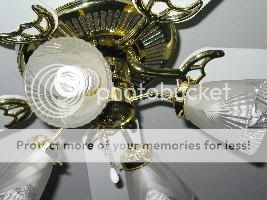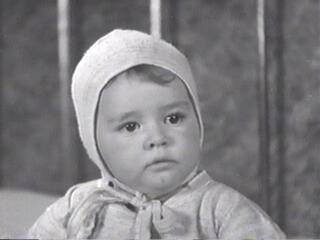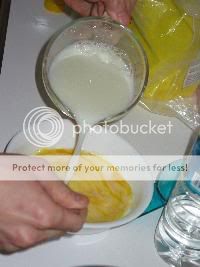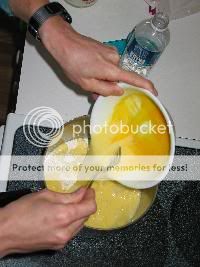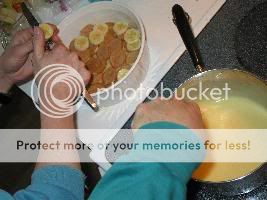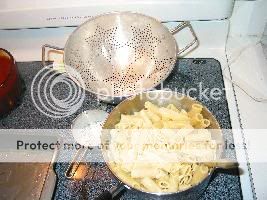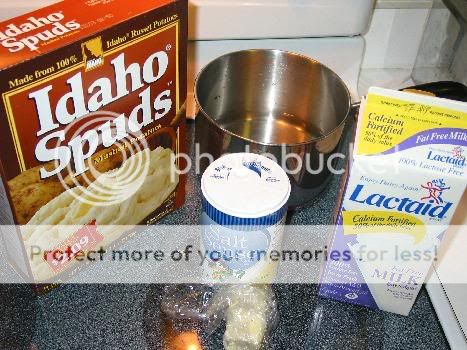
The early history of tea is shrouded in myth - it is said an emperor/scholar Shen Nung in 2737BC sitting under a Camellia senensis bush was drinking hot water when a sprig of a leaf fell in his cup - Eureka. Kuo P'o first describes the drinking of tea around 350AD and around 780AD Lu Yu wrote Cha Jing - "the Classic of Tea" commissioned by tea merchants of the time. Brick Tea spread via the Silk Road around 618AD into Turkey, India, Russia, and the West. Our current leaf tea steeped in boiling water was developed during the Ming Dynasty (1368-1644) - the first teapots were also developed as they are used now during this time also. Around 1644 in the Quing Dynasty, tea makers discovered the secrets of controlled fermentation (oxidation) and the first red and black teas were developed. The Portugese discovered tea around 1516 and the Dutch and the English discovered the pleasures and benefits of tea around 1615. Tea plantations were first established by the British in India by early 1800s.

Tea can only be made using the fresh tips of the Camellia plant - the scarcely opened buds that start to grow in Spring. Once a leaf is fully developed, it becomes too coarse for use. The drying of tea leaves must be done within 24hrs of picking or the juices will begin to oxidize. The main difference between Green Tea and Black Tea is in the lack of oxidation in Green Tea. In the preparation of Green tea, warm (not boiling) water must be used or a bitter taste is developed - ideally around 160degrees Fahrenheit is recommended. With Black tea boiling water should be used in steeping in order to release the flavors.
There are many rituals and traditions which have developed in the Far East with regard to tea preparation, presentation, and consumption, but I prefer the JUST DRINK IT protocols instead. Here's what I do: I put 2 or so heaping teaspoons of my favorite tea leaves in a tea ball - I pump in boiling hot water and set a timer for about 4-5 minutes. I pull out the tea ball (I re-use 2-4 times depending on what type of leaves - you can use green tea leaves 4-6 times), then pour the tea through a Kensington strainer into my tea cup - I'll sometimes add a teaspoon of sugar. I begin with pure water - I have a reverse osmosis/deionization water filtration system in my basement which produces water of 0 conductivity (distilled quality) at 200gallons/perday rate when I need it. I keep a water cooler in the kitchen filled with this water at all times. This is the water my family uses to drink and cook with also:

WHY DO I FILTER AND PRODUCE MY OWN DRINKING WATER?
Simply put, you can't trust anybody including Spring Water peddlers, your municipal water supply, etc. Here is a test I ran a year ago after I went to my local grocery store and purchased a sample of every water brand they were selling:
..........Chlorine(ppm)..Ammonia(ppm)..Nitrates (ppm)...Conductivity(μS/cm)*
“Spring Waters”
CrystalGeyser...0.........<2.5..........5...............232
1.9¢/oz
DeerPark........0.........<2.5..........<2.5............193
2.6c/oz
Evian...........0.........<2.5..........<5..............556
3.7¢/oz
FoodLion........0.........<2.5..........15-20...........236
1¢/oz
Nestle..........0.........0.25..........10..............521
0.8¢/oz
“Filtered Waters”
Aquafina........0.........0.............0...............8
3.9¢/oz
BlueMist........0.........0.............0...............0
2.3¢/oz
Dasani..........0.........0.............0...............51
3.8¢/oz
LeBleu..........0.........0.............0...............0
2.9¢/oz
My RO/Deionized.0.........0.............0...............0
~0.1¢/oz
Tap Waters
Cary(Aug 2002)..2.6.......1.0..........2.5.............313
Cary Jan 2003)..5.........1.0..........0...............194
Sink Carbfilt...1.0.......0.25.........0...............193
source: JordanLake (CapeFearRiverBasin)
Holly Springs...<0.2......trace........5...............279
source: Cape Fear River & Falls of Neuse Lake
Raleigh.........0.8.......0.5..........<2.5............256
source:Falls of Neuse Lake
Apex............0.........0............<2.5............166
source: groundwater, well
Back to Tea again...What are the Properties of Tea?
The primary beneficial aspect of Tea is in the antioxidant activities of the Camellia sinensis plant leaf. This activity can be measured using cumene hydroperoxide/hemoglobin methylene blue method - this measures the activity of the various polyphenols present in tea. A King's College study in 10/2002 documents several of these polyphenols found in teas: EGCG, 4 different Theaflavins, epicatechin gallate, alpha-theagallin, quercetin-3-rutinoside, 4-caffeoylquinic acid, flavon-3-ols, flavonols, gallic accids, hydroxycinnamates, etc. According to a report in the Japanese Journal of Clinical Pathology [51(9):859-63,2003Sept],
here are the antioxidant activities of:
heated Green Tea = 207 nmols/ml
non-heated Green Tea = 280 nmols/ml
powdered green Tea = 481 nmols/ml
black Tea = 215 nmols/ml
Journal of Agricultural & Food Chemisty [51(15):4427-35,2003Jul16] documents in 45 samples of various teas how green tea has higher contents of catechins than black or Oolong teas also. They show that the oxidation process reduces the levels of the catechins but actually elevates the levels of gallic acids. In general polyphenol levels were less in oxidized (black) teas.
What is the in-vitro and in-vivo effects of tea? There are several polyphenols in tea of which epigallocatechins (EGCG) are the most studied. Tea has been shown to cause a ~2mmHg lowering of systolic blood pressure in women, to inhibit bladder tumor growth, to inhibit the growth of prostate and breast cancer, and cause anti-leukemic effects on leukemic cell lines.
According to Antiviral Research {58(2):167-73,2003Apr], EGCG has anti-adenoviral activity via several mechanisms both inside and outside the cell.
EGCG has been shown to inhibit platelet aggregation in an Austrian study in 2002 following women using black teas for greater than 1 month.
An Indian study in April 2003 on the hot water extract of black tea seems to demonstrate an antidiarrheal effect on all models used.
A Case Western study from 10/2002 showed EGCG inhibits the cartilage resorption in arthritis suggesting possible benefits for arthritis sufferers.
An NYU study in 1/2003 using Black Tea on teeth showed the exposure to regular black tea reduced caries 57% on subjects with regular diet, and reduced caries by 64% on a cariogenic Diet - so tea may work as well as brushing with fluoride.
Archives of Internal Medicine [163(12):1448-53.2203Jun23] reported in a Vanderbilt Univ study that with use of a capsule of theaflavin-enriched green tea extract (375mg) vs placebo for 12wks, levels of LDL fell 16 mg/dL, total cholesterol fell 11mg/dL, and levels of the "good" HDL actually rose 23mg/dL. These results are comparable to low doses of the hundreds of dollars a month HMG-CoA reductase inhibitors like Lipitor, Pravachol, Zocor etc.
A recent Asian study demonstrated that Tea increases the 24hour energy expenditure and thereby helps in weight reduction. Anti-aflatoxinogenic properties were noted in coffee and teas due to the their levels of tannins. Regular consumption of Green Teas have been shown to reduce chronic halitosis significantly, mainly by anti-bacteriogenic properties. In-vitro studies have shown an insulin-potentiating effect of tea's EGCG, tannins, and theaflavins. Interestingly the addition of milk (5g of 2%), non-dairy creamers, and soy milk decreased this potentiating effect by 33%. Therefore to obtain maximal anti-diabetogenic benefits of tea, you should drink it black (or green).
Several mechanisms have been proposed as the basis of all of these activities:
1.epicatechin may bind and activate an allosteric site that enhances P-glycoproteins overall function and efficiency. P-glycoproteins transfer a wide variety of compounds from the cell interior across the lipid bilayer membranes. This includes drugs, toxins, xenobiotics, carcinogens.
2.GTE or EGCG interferes with signal transduction and activities of avarious protein kinases are thereby inhibited. The expression of nuclear proto-oncogenes declines thereby and the activity of ornithine decarboxylase is reduced. Ornithine decarboxylase catalyzes the rate-limiting step in the biosynthesis of polyamines and is closely linked to cell proliferation and carcinogenesis.
3.Increased polyamine depletion bhe the polyphenol activity of tea extracts could also be the mechanism.
What are the Potential Negatives?
Tea is a fairly strong stimulant. A Mayo Clinic Trial in 2003 in patients with metastatic prostate CA tried Green Tea in large doses (6 cups/day) - this tended to reduce the PSA levels over 2 months possibly but toxicities were noted including Insomnia, Nausea, Diarrhea, mental status changes.
If you thought tea might reduce the risk of colo-rectal cancer, there was a trial published in the US follwing tea consumption and colo-rectal cancer incidence over time. There was no association in this large study - neither a slight + nor a slight - effect.
Green tea extracts used in large doses have raised concerns over binding non-heme iron and thereby possibly worsening anemia in people who may have this problem. The Am. J. Clin. Nutr. [2001 Mar;73(3):607-612] article that raised this concern did not study black teas.
There have been concerns over organo-phosphate pesticide levels in the old-fashioned "brick teas" (levels 1000mg/kg), but levels as high as 500mg/kig have been measured in some green teas as well. More studies will need to be performed but in general, pesticide use has been reduced and regulated for most large tea plantations.
The caffeine content (the stimulation effect) of tea is viewed both positively and negatively by people. Using Fourier transformation infrared spectrometry, the caffeine levels of various tea samples can be determined easily as published by Analytical & Bioanalytical Chemistry [374(3):56-5,2002Oct]. In general the levels will vary with tea leaf brand, preparation method, concentration used etc. But using the general "One heaping teaspoon of tea leaves per 6 ounce cup in fresh boiling Spring Water" instructions most use,
The Caffeine Content of TEA/COFFEE Comparison (per 177ml = 6oz cup):
milligrams of caffeine.....Beverage
60-90......................Espresso coffee
60-180.....................Drip coffee
6-16.......................Green Tea
12-55......................Oolong Tea (Semi-black)
25-110.....................Black Tea
The beauty of tea is that you can easily "decaffeinate" your product. 90% of the caffeine content of tea is infused out of the tea leaves in the first 30 seconds of steeping. So if you pour off this first infusion after about 30seconds, you have a 90% "de-caffeinated" product - this removes 35mg of caffeine and as a bioproduct you lose 4-10% of the flavor of tea. I found this information from the website of a tea connoisseur.
So What Type of Tea is Good?
There is as much connoisseurship when it comes to tea as there is with wines and beers. The primary producers of tea in the world are in India (28% of world's tea), followed by China (23%), Sri Lanka (10.4%), Kenya (8%), Turkey (5.8%), Indonesia (5%), Japan (3%), Argentina (2%), Malawi, Zimbabwe, etc.
The undisputed highest quality teas are produced in Japan - the "Matcha" produced in the Nishio region in Aichi (on Honshu Island) Japan and regulated by the government in terms of standards/quality is a shade-grown green tea consumed in powder form and used in the Chado (tea ceremony). In Japan and Korea, only green tea is used even today. In China, green and Oolong Teas are favored.
The highest quality black teas, the type of tea preferred by the British, Europeans, and Americans, are probably produced in India - the Darjeeling Teas produced in the foothills of the Himalayas is a very refined black tea with light oxidation and high polyphenol activity. The Nilgiri teas are produced in the southern hilly regions also resulting in lighter oxidation. The "Ceylon Teas" of Sri Lanka are also famed for their refined flavors - the Kenilworth, St.James, Nuwara Eliya, Galaboda, and of course America's favorite Lipton Teas. China is famous for the delicate Keemun tea which also makes a good ice tea, smoky Lapsang Souchong, and the old standy "Gunpowder" Teas so-called for their balled tea-leaves.
We currently have vaccuum jars of Darjeeling, Nilgiri, and Japanese Sencha Green Tea sitting on our kitchen counter. I used to drink a lot of Keemun tea but I prefer to spend the money on Nilgiri or Darjeeling teas instead. My wife and mother notices that when I drink a lot of green tea, my breath smells fresh and good. We own a 8cup capacity "Brown Betty" earthenware teapot produced in England which we use to infuse all our tea. I never wash it according to directions, simply rinse out quickly in tap water and let dry. The antibacterial anti-oxidant activity of tea elixirs prevents any mold or bacteriosis in this pot.
A good convenience, though blasphemy according to tea connoisseurs is using a "hot pot" on standby:

Mine is a "Tiger" Brand made in Japan and has been in service for over 3 years. Zojirushi produces the most famous of these.
I've read maybe 6 or so books about tea, I heartily recommend Okakura's Book of Tea which can be purchased, but borrowing from your library is recommended. John Blofeld's Chinese Art of Tea is a good book as is Jane Pettigrew's the Tea Companion.



